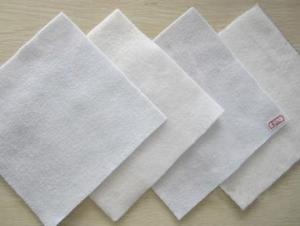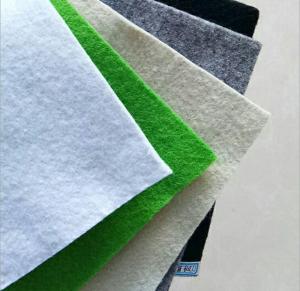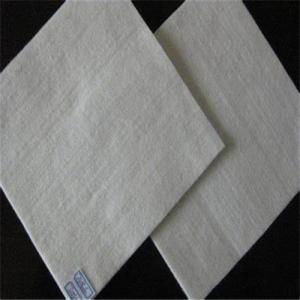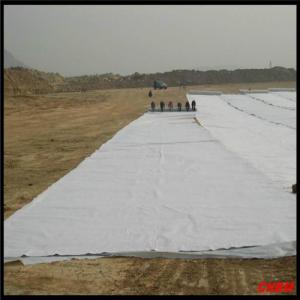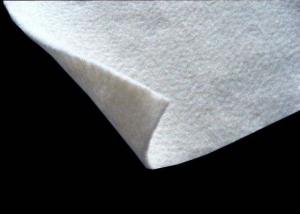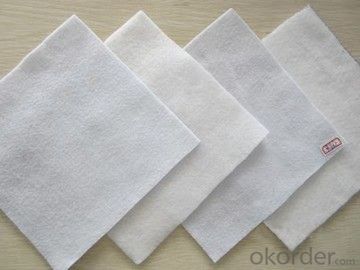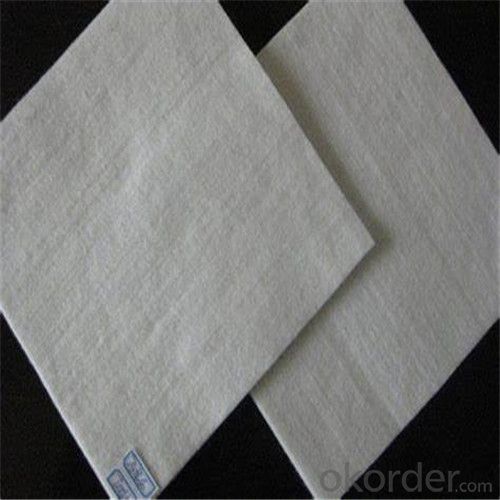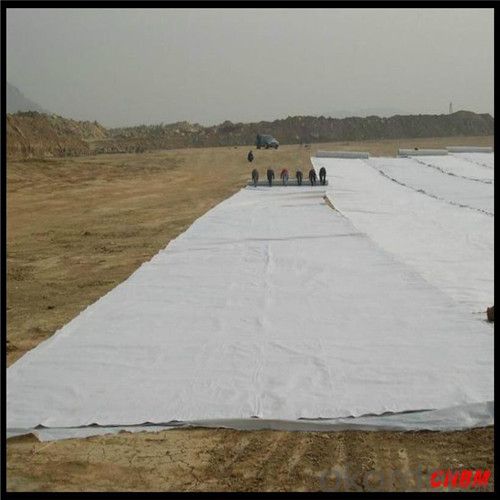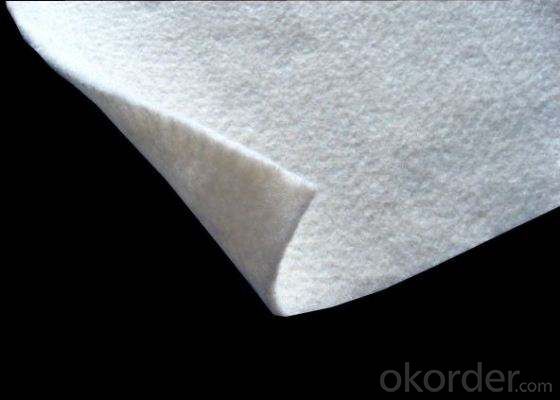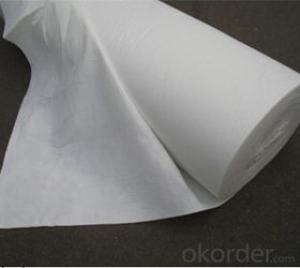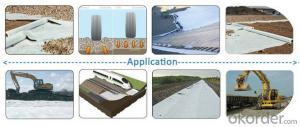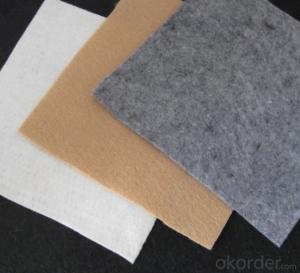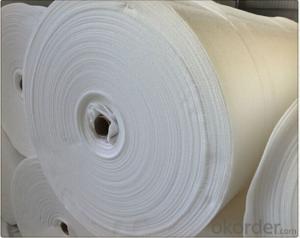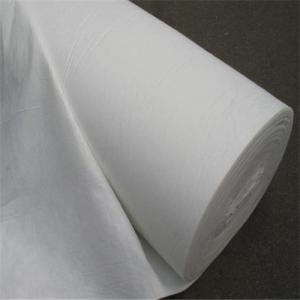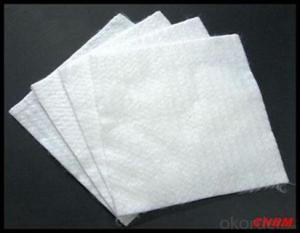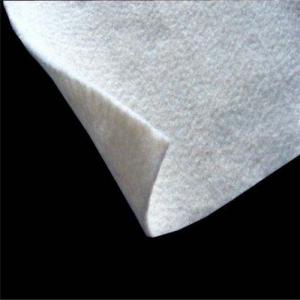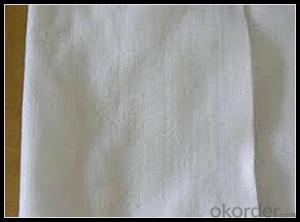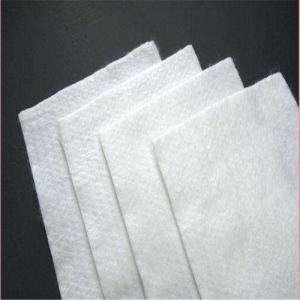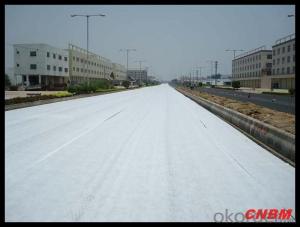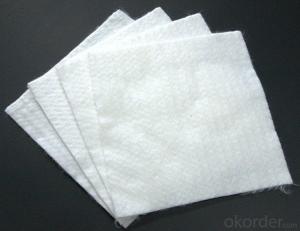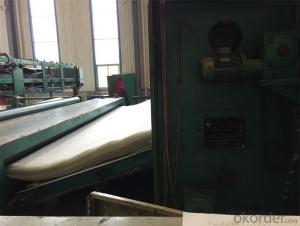Polypropylene Non-woven Geotextile for Construction
- Loading Port:
- China main port
- Payment Terms:
- TT or LC
- Min Order Qty:
- 1000 m²
- Supply Capability:
- 1000000 m²/month
OKorder Service Pledge
OKorder Financial Service
You Might Also Like
Specification
Polypropylene Non-woven Geotextile Description
Polypropylene Non-woven Geotextile produced from high quality polypropylene or polyester fibres, Nonwoven Geotextiles are needle
punched to form a strong fabric that retains its dimensional stability and is resistant to damage from construction stresses.
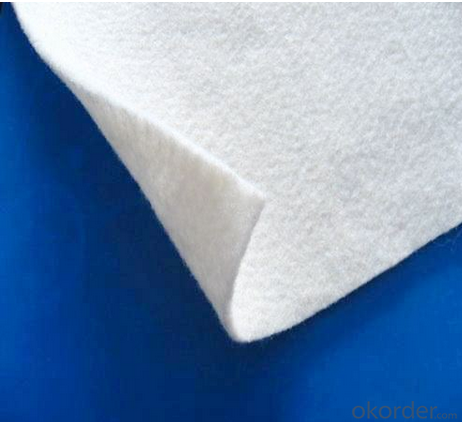
Polypropylene Non-woven Geotextile Specification:
(1) Mass per unit:100g/m2~1500g/m2
(2) size of package: width:1m~8m , length:50m~100m
(3)Color: white, black, grey
Packaging & Shipping
Packing: Plastic film or woven bag;
Shipping: About 15 days after receipt the deposit
Our Service
Quality assurance
1.On a regular basis or as per your request,we entrust national testing agencies to conduct quality inspections
2. Strictly in accordance with the ISO9001-2008 international quality system standard,we monitor and manage the whole process throughout production,quality testing,and measurement to ensure product quality
3. For quality-related construction delay or substandard construction(except for damage or losses due to customer’s responsibility or irresistible natural disasters),we have refunding,replacement,and repair services.We will respond to customers’ feedbacks on quality issues within 24 hours.
After-sales service
1.In order to provide customers with comprehensive technical support,we will provide technical and other related information upon request in a timely manner.
2.In required,we will appoint specialized technicians to the construction site to give technical trainings to construction people,and offer technical guidance throughout the whole construction process.
3.For damage due to shipment and delivery,after we receive the complaint,we will check the issure through provided pictures and videos.If our responsibility is confirmed,we wil offer free replacement.
4.When the construction is completed,as your request,our technical staff may participate in the final acceptance.
FAQ:
Q: What kind of payments does jenor support?
A: T/T, L/C, Cash are accepted.
Q: Do you charge for the samples?
A: Accordeing to our company policy, the samples are free, we only charge the freight fee. And we will return the freight fee during the next order.
Q: Can you produce according to customers' design?
A: Sure, we are professional manufacturer, OEM and ODM are both welcome.
- Q: Production of 1 square meter 100g geotextile consumption of polyester fiber how many kilograms
- Theoretically is 100g, I am specializing in the production of geotechnical materials, wish smooth
- Q: Who can talk about geogrid, fiberglass and geotextile What is the difference, from the material function, use all aspects of speaking, if the answer is good, I will add more points
- Grille is made of polypropylene, polyvinyl chloride and other polymer polymer by thermoplastic or molded two-dimensional grid or with a certain height of the three-dimensional grid grid, when used as a civil engineering, known as geotechnical Grille Engineering applications: roads, railways, abutments, approach roads, docks, dams, slag and other soft soil foundation reinforcement, retaining walls and road surface cracking engineering and other fields. Fiberglass mesh used in the external walls, wall paint, the main material to prevent the junction of different mortar and other plastering material cracking, hollowing. Local node reinforcement will also be used. Geotextile has excellent filtration, drainage, isolation, reinforcement, anti-seepage, protection, with light weight, high tensile strength, good permeability, high temperature, anti-freeze, anti-aging, corrosion resistance. Common non-woven fabrics, water layer inside the use, polyethylene polypropylene waterproof also used.
- Q: The difference between lap and stitching
- In terms of popularity, the lap is a kind of overlapping, overlapping with each other interface method; and seam law is not overlapping, the use of docking method, will inevitably leave the gap, so called seam method. These two methods are used for geotextile construction, the construction requirements: When the use of lap connection, lap length should be 0.3 ~ 0.9m, the use of seam method, the bonding width of not less than 50mm, bonding strength of not less than The tensile strength of the material. On-site construction of the upper and lower joints should be staggered, staggered length of not less than 0.5m.
- Q: Are geotextiles resistant to biological clogging?
- Yes, geotextiles are generally resistant to biological clogging. They are designed to allow water to pass through while preventing the movement of soil particles. This characteristic helps to minimize the growth of organisms, such as bacteria and algae, that can cause clogging. However, it's important to note that the level of resistance may vary depending on the specific type and quality of geotextile used.
- Q: How are geotextiles classified?
- Geotextiles are classified based on their functions, materials, and construction methods.
- Q: What are the different geotextile erosion control products available in the market?
- There are several geotextile erosion control products available in the market, including geotextile fabrics, erosion control blankets, turf reinforcement mats, silt fences, and sediment control tubes. These products are designed to prevent soil erosion, stabilize slopes, control sediment runoff, and promote vegetation growth.
- Q: Garage top back to the soil before the drainage board geotextile take what role
- The top surface of the drainage board glue a layer of geotextile filter to prevent the passage of soil particles, so as to avoid drainage channel obstruction of the drainage channel, said white is to do a filter layer, the water discharged to the designated location, the traditional process is Block ah, stone ah, what do the water layer, and now with the drainage board is not the reason for the stone is the drainage board is plastic, light weight, can reduce the load of the building. Manufacturers of drainage board geotextile waterproof board
- Q: Can geotextiles be used in riverbank stabilization applications?
- Yes, geotextiles can be used in riverbank stabilization applications. Geotextiles are commonly used to reinforce the soil and prevent erosion in riverbanks, helping to stabilize the slopes and prevent soil loss. They are effective in reducing water flow velocity, promoting vegetation growth, and providing long-term stability to the riverbank.
- Q: How do geotextiles help in preventing lateral spreading of soil?
- Geotextiles help in preventing lateral spreading of soil by providing a barrier that restricts the movement of soil particles, thereby reducing the potential for erosion and instability. The geotextile material acts as a separator, preventing the mixing of different soil layers and maintaining their integrity. It also enhances soil reinforcement, distributing the applied load more evenly and increasing the overall stability of the soil structure. Additionally, geotextiles improve drainage by allowing water to flow freely while preventing the loss of fine particles. Overall, geotextiles play a crucial role in preventing lateral spreading of soil and ensuring the long-term stability of various civil engineering projects.
- Q: Are geotextiles resistant to fire?
- Yes, geotextiles are generally resistant to fire. They are typically made from materials that have high melting points and are designed to withstand exposure to heat and flames without catching fire or spreading flames. However, it is important to note that the level of resistance may vary depending on the specific type and composition of the geotextile.
Send your message to us
Polypropylene Non-woven Geotextile for Construction
- Loading Port:
- China main port
- Payment Terms:
- TT or LC
- Min Order Qty:
- 1000 m²
- Supply Capability:
- 1000000 m²/month
OKorder Service Pledge
OKorder Financial Service
Similar products
Hot products
Hot Searches
Related keywords
